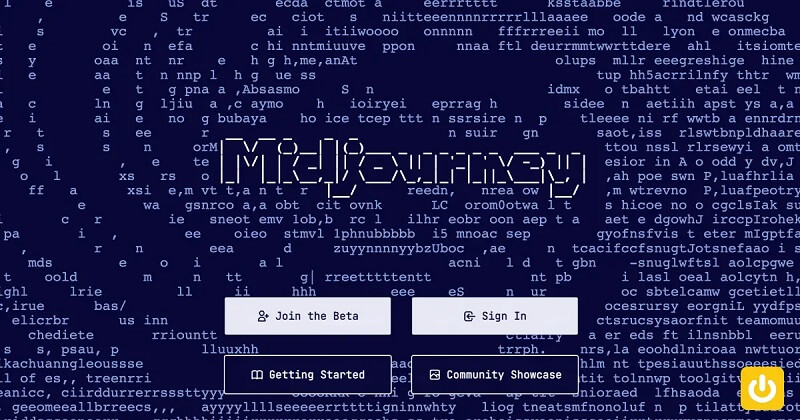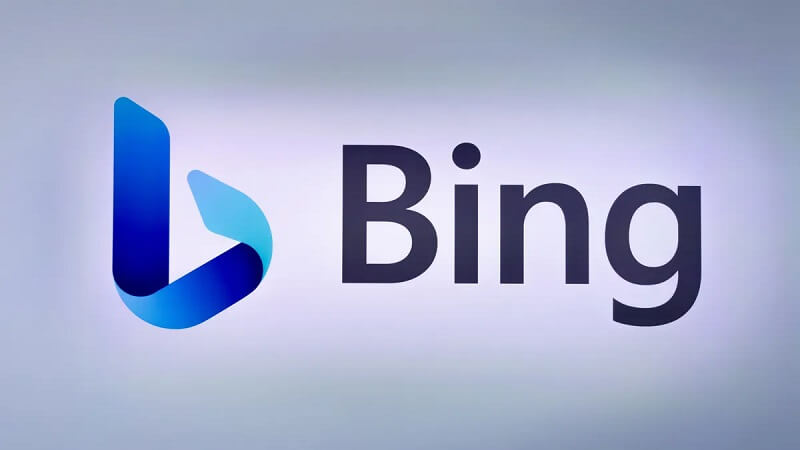Artificial Intelligence and Graphic Design: Combining Machine Learning to Boost Creativity

Artificial Intelligence and Graphic Design: Several industries have been transformed by artificial intelligence (AI). AI has developed into a vital tool for designers looking to foster creativity and innovation by fusing the capabilities of neural networks and machine learning. AI is changing the graphic design scene, allowing designers to push limits and produce visually striking and powerful designs. It can do this by anticipating color palettes and creating unique fonts.
We’ll delve into the intriguing realm where creativity and technology collide and learn about the countless opportunities artificial intelligence offers for the advancement of graphic design.
Automated Assistance for Design
AI has opened the door for automated support in the graphic design industry, allowing artists to improve their creative process and generate visually striking designs. Designers may now automate monotonous processes like picture editing and layout composition by using AI algorithms and neural networks.
It frees up their time to concentrate more on the ideation and conceptualization phases of their work. In addition to saving time and effort, this symbiotic link between AI and graphic design also creates new opportunities for innovation, stretching the bounds of creativity in the digital sphere.
Automatic Picture Editing
The intersection of Artificial Intelligence and Graphic Design has revolutionized the creative process, especially in the area of automatic photo editing. AI and machine learning algorithms have automated processes like object removal, color correction, and picture editing, increasing their productivity and creativity.
These artificial intelligence (AI) technologies replicate the knowledge of expert editors by analyzing large volumes of visual data and learning from patterns to make wise selections. Modern technology pushes the bounds of creativity in graphic design by creating new opportunities for experimentation and exploration while also saving time and effort.
Customization and Design Driven by Data
Graphic design benefits from the application of artificial intelligence (AI), especially when paired with machine learning. AI systems have the potential to improve creativity in several ways by utilizing the power of data-driven algorithms. Customization is a crucial component, where AI examines user preferences to create designs that are precisely suited to each user’s demands.
AI also uses machine learning to find trends and patterns in design aesthetics, which helps designers produce visually striking and powerful artwork. AI enables graphic designers to create highly customized and compelling images by bringing data-driven insights into the design process.
Creative Exploration and Generative Art
Graphic design and artificial intelligence (AI) have come together to form an innovation that uses machine learning to boost creativity. Together, these technologies enable unmatched creative exploration since AI systems can evaluate large volumes of data, spot trends, and provide original and creative design concepts.
With the development of generative art, artificial intelligence (AI) systems may now independently make creative artwork according to predetermined guidelines or even work with human designers to create aesthetically striking and thought-provoking pieces. The combination of AI and graphic design offers countless opportunities to transform the creative sectors and push the limits of artistic expression.
Automated Generation of Content
With machine learning approaches, artificial intelligence (AI) and graphic design have combined to produce a potent mix that enhances creativity through automated content development.
AI systems can now evaluate enormous volumes of data, spot patterns, and trends, and provide aesthetically pleasing designs that complement human goals and preferences thanks to this connection. AI-powered graphic design tools can generate high-quality, personalized content by continually learning from user feedback and modifying their algorithms. It allows them to save creators time and effort while also extending the realm of creative possibilities.
Feedback and Validation of Designs
Through the combination of machine learning techniques, artificial intelligence (AI) and graphic design have established a remarkable synergy that allows designers to boost their creativity. Designers may test their decisions and get insightful feedback on their ideas by using AI algorithms and data-driven models. Machine learning algorithms, which can also spot trends and offer insights into what works and what doesn’t can analyze large volumes of design data.
Through this iterative process, designers may make well-informed judgments based on recommendations and validations given by AI, therefore continually improving their work.
In the end, this combination gives designers the freedom to experiment and produce aesthetically pleasing and functional designs.
Ethical Issues
Machine learning and artificial intelligence (AI) have transformed the fields of graphic design. Machine learning algorithms can produce original and imaginative ideas by fusing AI with graphic design, improving the creative process. However, there are ethical concerns with this integration.
AI in graphic design raises ethical questions about ownership and copyright and may result in the undervaluing of human innovation and ability. Furthermore, biases in AI algorithms that can reinforce prejudices or exclude particular groups of people are a source of worry. It is imperative to find a balance between maintaining human inventiveness and using AI to boost innovation to resolve these ethical concerns,
AI-Powered Tools That Are Revolutionizing the Graphic Design Industry
1. Midjourney:
Midjourney is a cutting-edge artificial intelligence-powered tool that completely changes the graphic design sector. It offers designers a variety of automated solutions by fusing cutting-edge algorithms with the strength of artificial intelligence picture production. Designers may save a great deal of time and work by optimizing their photos with Midjourney, which automatically adjusts color sizes and crops them.

It also provides intelligent advice and ideas for enhancing designs, guaranteeing excellent outcomes. Designers may improve the entire creative process by using Midjourney’s AI algorithms to generate new ideas and inspiration.
2. ChatGPT:
Streamlining creative workflows, ChatGPT is an AI-powered technology that is redefining the graphic design business. ChatGPT is a language model that creates conversational interaction that sounds human by utilizing natural language processing. It can write emails, articles, social media posts, essays, code, and other written stuff in addition to answering inquiries.

ChatGPT uses artificial intelligence (AI) to automate monotonous operations like color correction, scaling, and cropping; giving designers more time to concentrate on their more creative work. ChatGPT has become a viral hit in the graphic design world because of its capacity to offer innovative shortcuts and even completely replace designers.
3. Bing AI:
One tool using AI that is transforming the graphic design sector is Bing AI. Bing AI gives designers a new degree of efficiency and creativity because of its sophisticated capabilities. Bing AI enables designers to communicate with the search engine and obtain comprehensive answers to intricate queries.

By integrating AI technology, Bing AI is altering the way graphic artists approach their work; opening up new possibilities and expanding the bounds of creativity.
4. Venngage:
One of the top platforms for AI-powered graphic design that is transforming the field is Venngage. Venngage’s sophisticated capabilities and user-friendly interface make it simple for designers to produce eye-catching images. With just a few clicks, users may create original and imaginative designs thanks to its AI-generated art capability.

Furthermore, Venngage is a go-to tool for both experts and novices because of its extensive selection of templates, adjustable components, and data visualization options. It is a true example of how AI is changing the field of graphic design.
How AI’s Seamless Efficiency Revolutionizes Graphic Design?
Automation of Repeated Activities:
The automation of mundane tasks frees up designers’ time for more creative and strategic work; removing the need for them to execute repetitive tasks.
Consistent Quality:
Graphic design is revolutionized by AI’s smooth efficiency; which reliably produces high-quality material via automation, accuracy, and real-time feedback.
Data visualization:
By automating data visualization procedures and producing aesthetically pleasing and simple-to-understand representations of complicated data, AI’s smooth efficiency transforms graphic design. AI can transform raw data into a compelling swimlane diagram, pie chart or infographic, making it easier to convey complex information visually.
Personalization:
With its smooth efficiency, AI transforms graphic design by providing individualized experiences and using client data to produce customized designs that speak to each person’s unique desires and preferences.
A/B Testing:
Through A/B testing, AI’s seamless efficiency transforms graphic design by providing data-driven decisions for better user experiences and optimized designs.
Enhanced Creativity:
AI’s smooth efficiency is revolutionizing graphic design in several ways; including increased inventiveness that opens up new options for designers.
Efficiency:
Graphic design is revolutionized by AI’s seamless efficiency; which saves time and money by automating repetitive processes, streamlining workflow, and boosting productivity.
Versatility:
AI’s smooth efficiency transforms graphic design by providing flexible tools that may adjust to various customer preferences, styles, and trends.
Accessibility:
The smooth efficiency of AI transforms graphic design by increasing accessibility and opening up bespoke designs to a larger spectrum of people.
Enhanced Collaboration:
AI’s smooth efficiency transforms graphic design by promoting efficient communication among designers and fostering cooperation through exploration.
Saving Time:
The AI transforms graphic design by freeing up time for designers to concentrate on their creativity by automating tedious processes.
Platform Consistency:
AI maintains platform consistency, enabling unified branding and a consistent user experience across media.
Case Studies Regarding AI’s Effect on Graphic Design
The Grid:
The Grid is one case study that illustrates how AI has affected visual design. It demonstrates how artificial intelligence (AI) algorithms may automatically create layouts based on content analysis, speeding up and streamlining the design process.
The Grid generates aesthetically pleasing designs while keeping consistency by allowing users to input information and preferences. It illustrates how designers can concentrate on making creative decisions thanks to AI’s automated capabilities; producing designs that are polished and of the highest caliber.
Spotify’s Creative AI Playlist Visuals:
Spotify, one of the leading music streaming platforms, has leveraged AI to enhance its graphic design process. With its Creative AI Playlist Visuals feature, Spotify uses AI algorithms to analyze the mood, genre, and lyrics of a playlist and automatically generates visually appealing graphics that represent the essence of the music. It ensures that the visuals align with the music; creating a more immersive and engaging user experience.
Conclusion
New creative opportunities have been made possible by the machine learning-based combination of artificial intelligence and graphic design. Designers may now create original ideas, automate tedious activities, and obtain insightful knowledge via data-driven research by utilizing AI algorithms.
The combination of technology has the potential to completely transform the graphic design industry by enabling designers to push the envelope and investigate novel solutions. As AI develops, even more revolutionary advancements will influence graphic design in the future.

